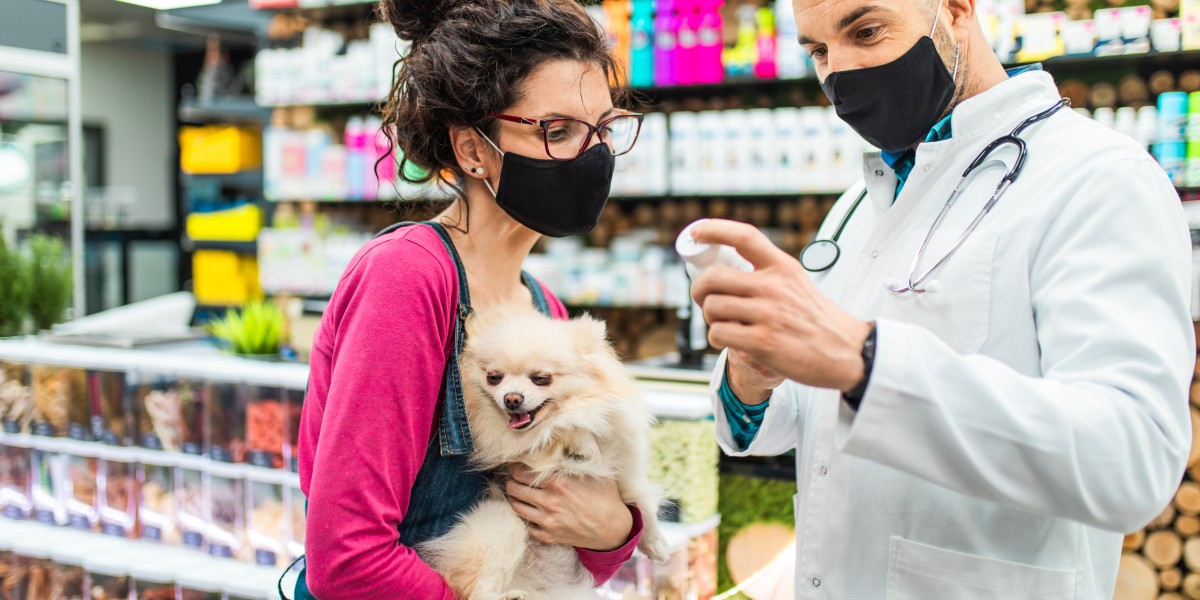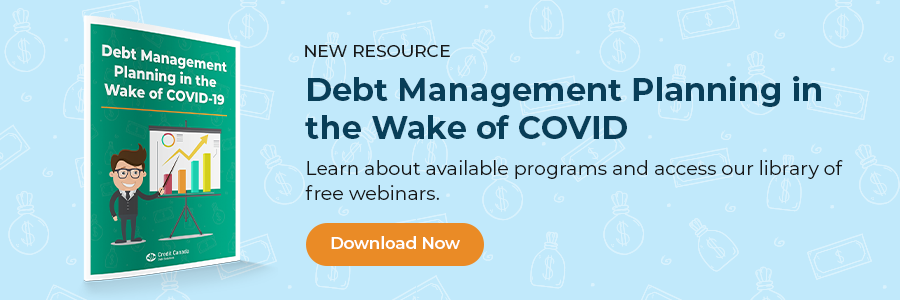
The COVID-19 outbreak had a massive impact on Canadians. Many people lost their jobs – or they had to make the switch to working remotely due to rolling lockdowns. To help cope with the isolation, many people adopted so-called “pandemic pets.” But many new owners have started to realize that the bills for adopting their new fur babies may be higher than they thought. Pandemic pet costs are a new reality for many.
The “work from home” explosion and lockdown conditions left a lot of people spending more time at home – an experience that might be very lonely. From the traditional fluffy cats and dogs to reptiles, fish, and birds, people adopted pets quite eagerly in 2020. For example, the Prince Edward Island Humane Society even ran out of dogs for adoption in November of 2020.
Between things such as pet grooming, insurance, food, and healthcare, owning a pet can be rather pricey – though it can be worthwhile for the unconditional love of a four-legged friend.
In today’s post, we’ll discuss the cost of pets – including different types of pet expenses – and how you can make some room in your budget to take care of your furry friend.
One-Time Pet Costs
Many of the expenses associated with pet ownership are one-off fees or once-in-a-while items that don’t come up very often. This can include a wide variety of pet costs, such as:
- Adoption/Purchase Fees. Animal shelters often charge an adoption fee to help cover the costs of caring for pets and preparing them to live with you. Meanwhile, pet stores may charge a premium for getting a “purebred” pet with all the certifications needed to verify their pedigree. These costs can vary greatly – ranging from under $100 to a few thousand dollars depending on the pet and where it comes from.
- Initial Veterinary Visits. An initial health exam with vaccines is a necessary part of taking a pet home. Some shelters and pet stores include this in the cost of the pet. Other shelters/pet stores may exclude this cost – meaning you’ll have to pay for it yourself.
- Pet Microchips. Microchips are a great way to protect your pet and make sure they can be identified by any reputable shelter or veterinary clinic if they get lost somehow. Microchipping can cost between $25 and $120 depending on the microchip and the clinic – though separate registration fees for a national pet registry may apply as an ongoing cost.
- Spaying/Neutering the Pet. Some pets, usually cats and dogs, may need to be spayed or neutered to prevent them from contributing to overpopulation that overloads pet shelters. This is an invasive procedure that may cost a few hundred dollars.
- Essential Pet Setup in the Home. This includes all of the miscellaneous items a pet may need to be in the home – such as a collar, ID tag, bedding, food/water dishes, leash, and other long-lasting items. New pet parents can easily spend hundreds of dollars on such items.
- Obedience/Pet Training. Some pet owners may take their dogs to teach them basic tricks and/or to break bad habits (like chewing furniture) early. Class costs can vary depending on the animal and length of the course. However, it’s not unusual for new pet owners to spend a few hundred dollars for training.
This list is far from exhaustive, but already covers thousands of dollars in potential pet costs. For many who bought pandemic pets, these upfront pet costs can be a big surprise. In some cases, these extra costs could push pet owners further into debt during an already challenging time – making paying off debt during COVID even more difficult. Though, many pet owners would gladly repeat the choice to adopt, despite knowing the costs.
Need Debt Counselling Help? Check out our resources that can help you manage debt now!
Common Types of Ongoing Pet Costs
Whether you get your pet at a local shelter or purchase them from a fancy pet store, the cost of owning a pet will be much higher than the adoption or purchase fee.
Some of the common costs for owning a pet include:
1. Pet Food Costs
While it’s an obvious need, many people don’t keep track of how much they spend on pet food. How much does pet food cost? The answer depends on the type of pet you have and what kinds of pet food you buy for them.
For example, the average cost of dog food in Canada is between $30 and $72 per month, depending on the breed. Larger dogs, like Great Danes, St. Bernards, and Huskies will obviously need to eat more than small Corgis or toy-class dogs like Chihuahuas.
This average doesn’t take into account any special dietary needs a pet might have, either. If you’re wondering “how much does pet food cost if my pet has special needs?” the answer varies. Medicated or specially-made pet food can cost hundreds of dollars per month.
Some brands and types of food will be more expensive than others as well. For example, premium wet canned cat food typically costs significantly more per serving than dry cat kibble – though it’s often recommended that wet food helps prevent urinary tract issues.
When planning your pet’s diet, it can help to talk to a veterinarian to discuss your pet’s specific needs and what kind of diet is best for them.
2. Pet Enrichment Costs
Another major pet cost category – and one which most pet owners often forget – is “enrichment” costs. This includes things like treats, toys, and other expenses that aren’t basic necessities but help your pet lead a more enriched and happy life. (Although, for some who have dogs that are still teething, chew toys could be considered a necessary expense if it helps keeps Fido from eating the furniture.)
As with pet food, the cost of toys and treats varies from one pet to the next. For example, some dogs might need to go through a few toys a month to keep them preoccupied. Meanwhile, a cat toy might last a whole season before the kitty damages it enough to require replacement.
Some companies even offer subscription boxes that help pet parents set a monthly budget for pet toys and treats. These subscription services offer a variety of randomized treats and toys that get shipped to the owner’s home once a month for a set fee – which can help manage costs quite effectively.
3. Pet Insurance Costs
Pet insurance is an optional cost that some pet parents might choose to help minimize the cost of veterinarian bills. How much does pet insurance cost? The price of pet insurance in Canada varies depending on the pet, insurance provider, and specific plan – just like with home or auto insurance.
The average insurance premium is around $39/month for dogs and $29/month for cats – though some insurance plans can be significantly more expensive.
Is paying for pet insurance worth it? It depends on the plan and the pet. Some insurance companies might raise premiums as your pet ages, or place strong restrictions on the types of medical care they cover, which can make the plan less useful in an emergency situation.
On the other hand, a good pet insurance plan can help you pay for important pet care – like dental work, immunizations, and emergency treatments – so your out-of-pocket costs are minimized. This could help save money on pet costs in the long run.
When choosing an insurance plan for your pet, it’s important to consider the potential savings of the plan and balance that against its costs.
For example, consider:
- The plan’s deductibles and whether there are any exemptions. If there are exemptions, how likely is it that any emergency care your pet needs will fall under these exemptions?
- Does the plan cover regular pet health checkups? if so, which ones?
- Does the plan have a restricted network of veterinarians? If so, is your preferred vet part of that network?
4. Pet Grooming Costs
Pet grooming costs can be very different from one pet to the next. Some pet parents are perfectly comfortable with grooming their pets themselves – using store-bought shampoo and grooming kits to minimize ongoing costs. Some pets may not even require frequent grooming.
On the other hand, some pets may require grooming every single month by someone who is very skilled in the art. For example, a French Poodle has dense and extremely curly hair. This can make it very difficult to groom – especially if you want to maintain a chic style.
This is why some pet owners choose to use a professional grooming service. The cost of pet grooming can vary from one service to the next and it can also depend on the pet.
Monthly pet grooming costs can vary between just a few dollars (for pets that owners can groom themselves) or hundreds of dollars (for high-maintenance pets), which can make grooming costs difficult to predict.
5. Ongoing Veterinary Costs
Keeping a pet is an enormous responsibility. Part of taking proper care of a pet is ensuring that they get adequate health care. This usually means regular trips to your local veterinary clinic for checkups, vaccinations, and other preventative care.
It may also mean emergency visits to help save your pet’s life in case something happens.
How much does going to the vet cost each year? The answer varies depending on the type of pet, the vet, whether pet insurance covers the visit (and the deductible), and what care is needed. For example, some estimates put the annual cost of heartworm/flea/tick prevention for a dog at $228, while flea prevention for cats averages $127. In many cases, you're not walking away from a vet visit with a bill that's less than $100.
Between parasite prevention, vaccinations, ongoing checkups, exams, X-rays and other services, routine veterinary care can easily equal close to $1,000 a year – even for pets that don’t have special needs. Emergency veterinary visits can each cost hundreds or thousands of dollars on top of these costs.
Worried about How You’ll Cover Pet Costs in Your Post-Pandemic Budget? Check out our COVID-19 resources for ideas on how you can manage your budget!
Have Debt from Caring for Your Pandemic Pet? We’re Here to Help!
The high cost of caring for a pet (especially during a pandemic) can take many people by surprise. From the initial costs of when you first take your pet home, to the ongoing cost of feeding and caring for them, it’s easy to rack up debt. Reaching out to a team that understands the importance of pets while balancing a budget can help.
Credit Canada’s Credit Counsellors are here to provide consumer debt help so you can rest easy with your pets instead of worrying about how you’ll cover the cost of their next vet visit. Our counselling services are free, confidential, and non-judgmental. If you're struggling with vet bills, credit card payments, and other monthly costs, you can reach out to us by calling 1.800.267.2272. You can book a free phone appointment with one of our Credit Counsellors who will review your budget and find some wiggle room. We're here to help you get out of debt so you can back to more important things, like enjoying life with your pet.

Frequently Asked Questions
Have a question? We are here to help.
What is a Debt Consolidation Program?
A Debt Consolidation Program (DCP) is an arrangement made between your creditors and a non-profit credit counselling agency. Working with a reputable, non-profit credit counselling agency means a certified Credit Counsellor will negotiate with your creditors on your behalf to drop the interest on your unsecured debts, while also rounding up all your unsecured debts into a single, lower monthly payment. In Canada’s provinces, such as Ontario, these debt payment programs lead to faster debt relief!
Can I enter a Debt Consolidation Program with bad credit?
Yes, you can sign up for a DCP even if you have bad credit. Your credit score will not impact your ability to get debt help through a DCP. Bad credit can, however, impact your ability to get a debt consolidation loan.
Do I have to give up my credit cards in a Debt Consolidation Program?
Will Debt Consolidation hurt my credit score?
Most people entering a DCP already have a low credit score. While a DCP could lower your credit score at first, in the long run, if you keep up with the program and make your monthly payments on time as agreed, your credit score will eventually improve.
Can you get out of a Debt Consolidation Program?
Anyone who signs up for a DCP must sign an agreement; however, it's completely voluntary and any time a client wants to leave the Program they can. Once a client has left the Program, they will have to deal with their creditors and collectors directly, and if their Counsellor negotiated interest relief and lower monthly payments, in most cases, these would no longer be an option for the client.







